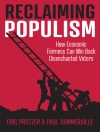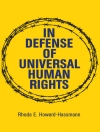Peace operations remain a principal tool for managing armed conflict and protecting civilians. The fully revised, expanded and updated third edition of Understanding Peacekeeping provides a comprehensive and up-to-date introduction to the theory, history, and politics of peace operations.
Drawing on a dataset of nearly two hundred historical and contemporary missions, this book evaluates the changing characteristics of the contemporary international environment in which peace operations are deployed, the strategic purposes peace operations are intended to achieve, and the major challenges facing today’s peacekeepers. All the chapters have been revised and updated, and five new chapters have been added – on stabilization, organized crime, exit strategies, force generation, and the use of force.
Part 1 summarizes the central concepts and issues related to peace operations. Part 2 charts the historical development of peacekeeping, from 1945 through to 2020. Part 3 analyses the strategic purposes that United Nations and other peace operations are intended to achieve – namely, prevention, observation, assistance, enforcement, stabilization, and administration. Part 4 looks forward and examines the central challenges facing today’s peacekeepers: force generation, the regionalization and privatization of peace operations, the use of force, civilian protection, gender issues, policing and organized crime, and exit strategies.
Mục lục
List of Figures
List of Maps
List of Boxes
List of Tables
List of Abbreviations
Acknowledgments
Introduction
Part I: Concepts and Issues
1. Peace Operations in Global Politics
2. Who Deploys Peace Operations?
Part II: Historical Development
3. Peace Operations during the Cold War
4. Peace Operations during the 1990s
5. Peace Operations in the Twenty-First Century
Part III: The Purposes of Peace Operations
6. Prevention
7. Observation
8. Assistance
9. Enforcement
10. Stabilisation
11. Administration
Part IV: Contemporary Challenges
12. Force Generation
13. Regionalization
14. Privatization
15. Use of Force
16. Civilian Protection
17. Gender
18. Policing
19. Organized Crime
20. Exit
Appendix
References
Index
Giới thiệu về tác giả
Paul D. Williams is Professor in the Elliott School of International Affairs at the George Washington University.
Alex J. Bellamy is Professor of Peace and Conflict Studies at the University of Queensland, and Director of the Asia Pacific Centre for the Responsibility to Protect.












